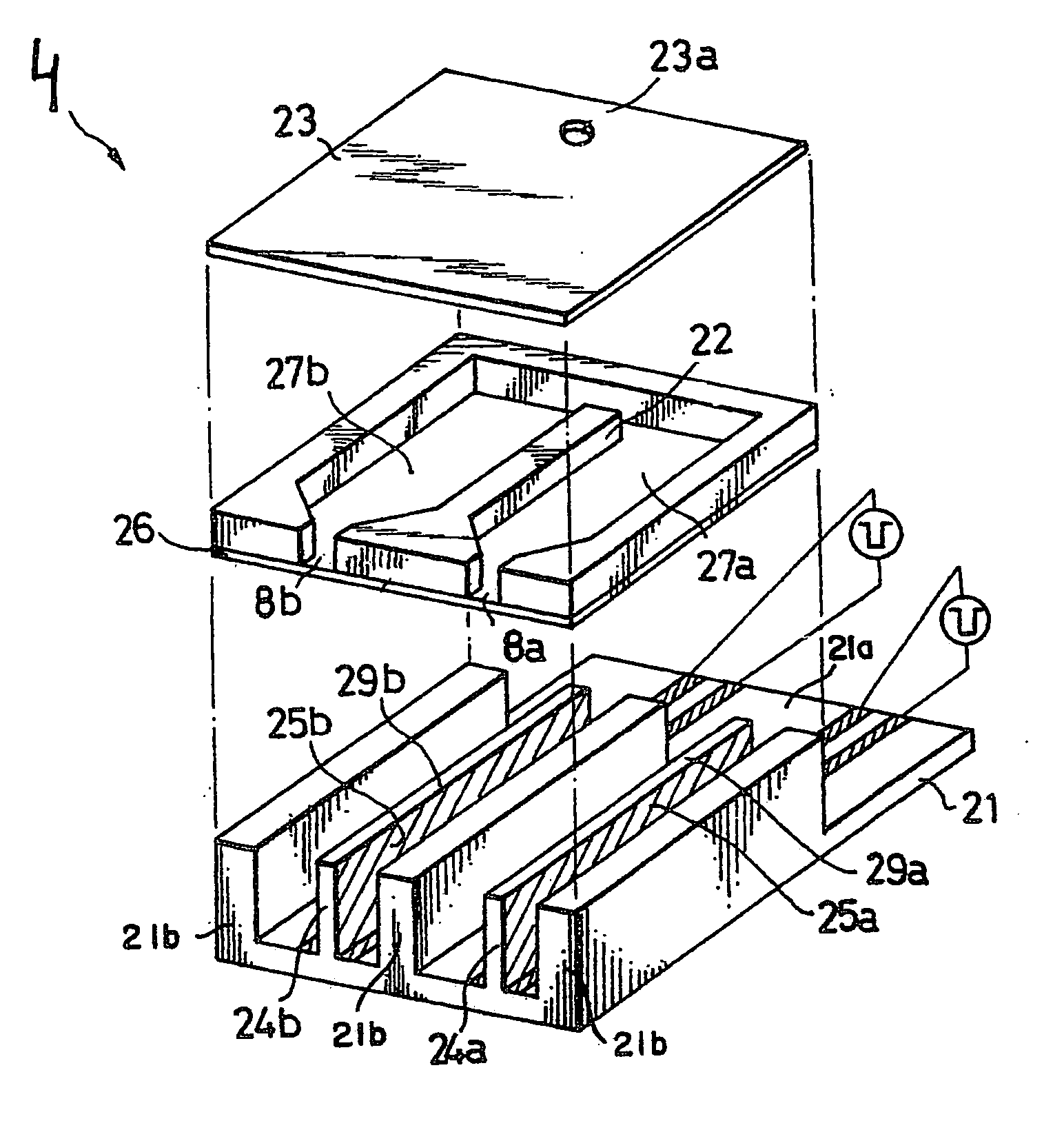Inkjet printhead and inkjet printer containing the same
a technology of inkjet printer and printhead, which is applied in the direction of printing, etc., can solve the problems of undesirable cross-talk, difficult to achieve full power closure between adjacent converters, etc., and achieve the effect of preventing cross-talk, preventing pressure waves, and preventing stretching of the chamber
- Summary
- Abstract
- Description
- Claims
- Application Information
AI Technical Summary
Benefits of technology
Problems solved by technology
Method used
Image
Examples
Embodiment Construction
[0014]FIG. 1 is a diagram showing an inkjet printer. According to this embodiment, the printer comprises a roller 1 used to support a receiving medium 2, such as a sheet of paper or a transparency, and move it along the carriage 3. The carriage includes a carrier 5 to which four printheads 4a, 4b, 4c and 4d have been fitted. Each printhead contains its own color, in this case cyan (C), magenta (M), yellow (Y) and black (K) respectively. The printheads are heated using heating elements 9, which have been fitted to the rear of each printhead 4 and to the carrier 5. The temperature of the printheads is maintained at the correct level by the application of a central control unit 10 (controller).
[0015] The roller 1 may rotate around its own axis as indicated by arrow A. In this manner, the receiving medium may be moved in the sub-scanning direction (often referred to as the X direction) relative to the carrier 5, and therefore also relative to the printheads 4. The carriage 3 may be mov...
PUM
 Login to View More
Login to View More Abstract
Description
Claims
Application Information
 Login to View More
Login to View More - R&D
- Intellectual Property
- Life Sciences
- Materials
- Tech Scout
- Unparalleled Data Quality
- Higher Quality Content
- 60% Fewer Hallucinations
Browse by: Latest US Patents, China's latest patents, Technical Efficacy Thesaurus, Application Domain, Technology Topic, Popular Technical Reports.
© 2025 PatSnap. All rights reserved.Legal|Privacy policy|Modern Slavery Act Transparency Statement|Sitemap|About US| Contact US: help@patsnap.com



